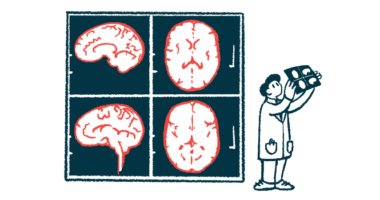Strong link between Parkinson’s, certain autoimmune diseases: Study
Sjögren’s syndrome, IBD, rare skin condition showed significant Parkinson's ties

People with Parkinson’s disease are at a higher risk of simultaneous autoimmune diseases where the immune system erroneously attacks the body, according to a review study.
Pooled data from multiple studies showed a significantly increased risk of Parkinson’s combined with either bullous pemphigoid, a rare skin condition, inflammatory bowel disease (IBD), or Sjögren’s syndrome, which is marked by dry eyes and mouth.
Overall, “this study supports the existence of a strong link between AIDs [autoimmune diseases] and PD [Parkinson’s disease], the researchers wrote, adding “clinicians need to be aware of the possibility of coexistence.”
The review study, “The association between Parkinson’s disease and autoimmune diseases: A systematic review and meta-analysis,” was published in Frontiers in Immunology.
Parkinson’s is marked by the progressive loss of nerve cells that produce a major brain chemical messenger called dopamine that’s involved in several functions, including control of voluntary movement. This leads to motor symptoms such as resting tremor, muscle rigidity, and slowness of movement, and to nonmotor symptoms, like mood changes and cognitive deficits.
Increasing evidence has implicated immune response impairment in Parkinson’s. In fact, some studies have suggested the neurodegenerative disease may be partly driven by autoimmune processes, which occur when the immune system wrongly attacks and destroys healthy tissue.
“There are shared mechanisms between PD and many AIDs, with PD often occurring in conjunction with at least one AID,” the researchers wrote. “However, epidemiological studies involving PD and AIDs have yielded inconsistent results, with contradictory and controversial findings.”
Investigating Parkinson’s autoimmune disease association
A team of researchers in China searched four electronic databases for published studies up to December 2022 to investigate the relationship between Parkinson’s and 34 autoimmune conditions previously reported to be the most common, and conducted a meta-analysis, a statistical analysis combining several studies’ results.
Of the 321 hits evaluated for eligibility, 46 observational studies — involving 752,488 people with AIDs, 121,155 with Parkinson’s, and 13,402,821 controls — were included. Half were conducted in Asia, 18 (39.1%) in European populations, and five (10.9%) in North America.
Most studies used people with autoimmune diseases as the test group, while six included Parkinson’s patients as the test group. The majority of studies compared patients with one to 10 age- and sex-matched controls. Of these studies, 38 had calculable risk estimates and were therefore included in the meta-analysis. Results showed a 55% significantly higher risk of Parkinson’s combined with autoimmune diseases.
While the findings indicated high variability between the studies, subgroup analyses didn’t find any significant differences in risk by study type or design, sex, age, or race.
Of the 34 autoimmune diseases investigated, bullous pemphigoid, inflammatory bowel disease, and Sjögren’s syndrome showed a significant association with Parkinson’s.
Seventeen studies looked at a link between bullous pemphigoid, which causes large, fluid-filled blisters in the skin, and Parkinson’s. Results showed a 2.7 times higher risk for having both conditions, the strongest link observed.
Based on data from nine studies, there was a 30% higher risk of Parkinson’s with IBD, a group of disorders that cause chronic inflammation in the intestines. In fact, “gastrointestinal inflammation and neuroinflammation may be important causes of PD due to disorders of the gut-brain axis,” the researchers wrote.
Based on data from five studies looking at a link between Parkinson’s and Sjögren’s syndrome, which mainly affects the glands that produce tears and saliva, there was a 61% increased risk of having both conditions.
No significant associations were found between Parkinson’s and autoimmune conditions such as multiple sclerosis, lupus, and rheumatoid arthritis.
“To the best of our knowledge, this study is the first to comprehensively synthesize the available population-based research evidence on the relationship between PD and AIDs,” the researchers wrote, adding it provided “evidence that patients with PD have a significantly increased risk for [simultaneous] AIDs. “However, it is difficult to distinguish the sequence of development of PD and AIDs in multiple studies, and this study only analyzed the risk of PD combined with AIDs to demonstrate whether there is a correlation between the two, not to determine the causal relationship.”
They said more more accurate evidence of a relationship “can be obtained by following up [patients] long enough to include a large sample size of the study population, using standardized hospital-based records of disease diagnosis, carefully selecting normal controls, and adjusting for potential [influencing factors].”
“Mechanistic studies” on the simultaneous occurrence of Parkinson’s and autoimmune disorders can help better understand how both get started and help recognize “new therapeutic and diagnostic targets” if a common beginning is observed, the researchers said.







